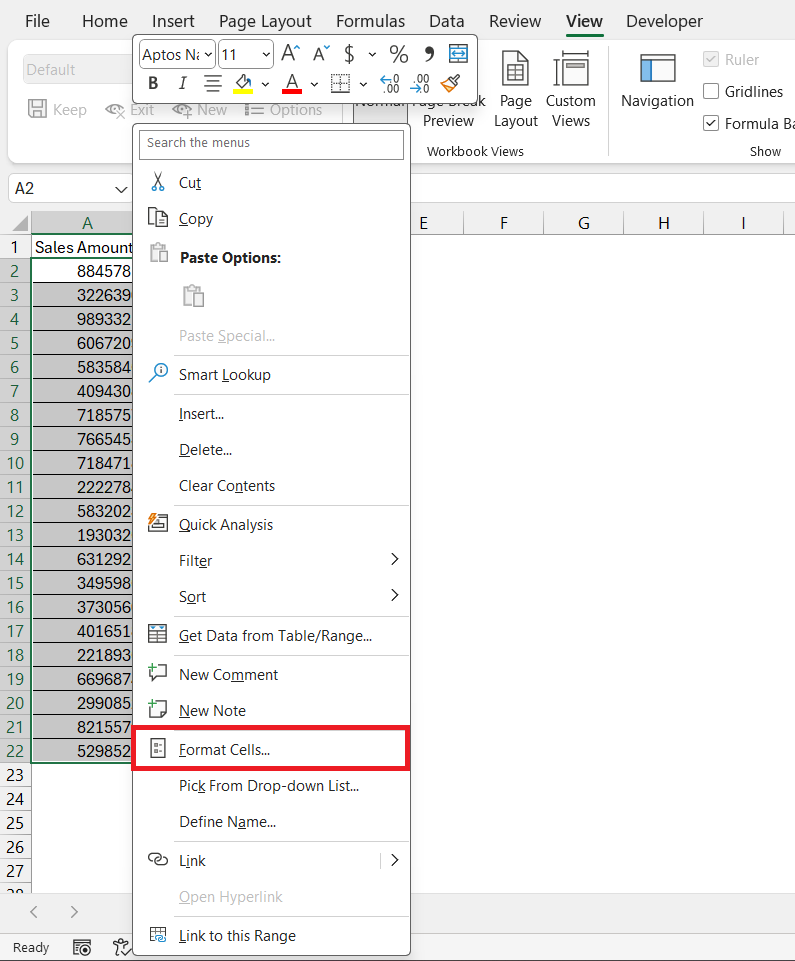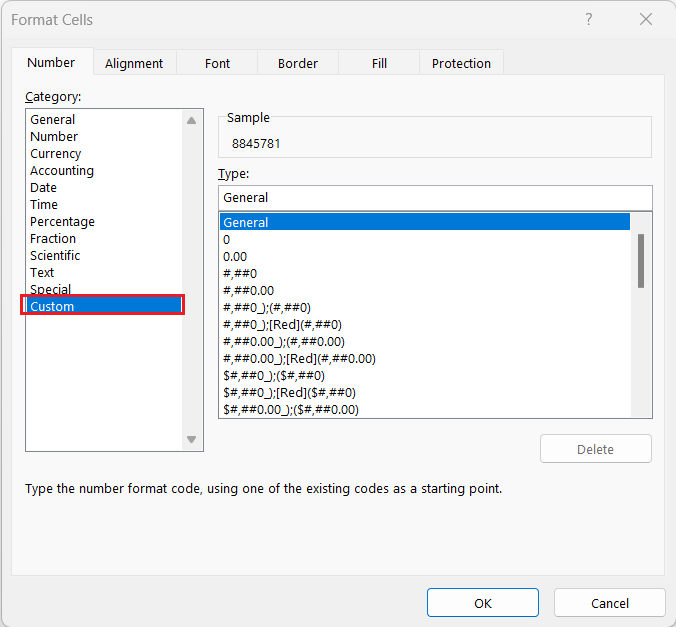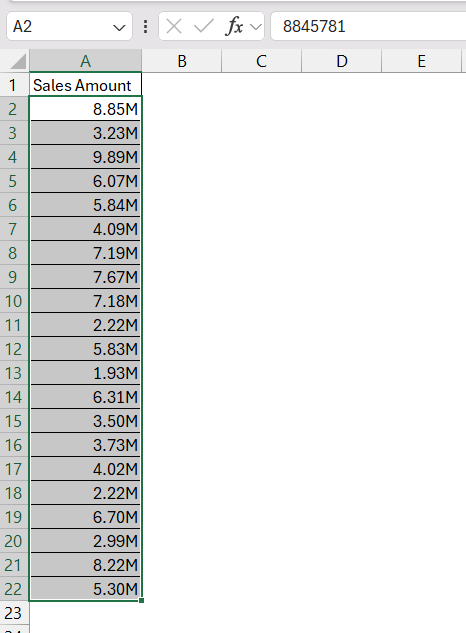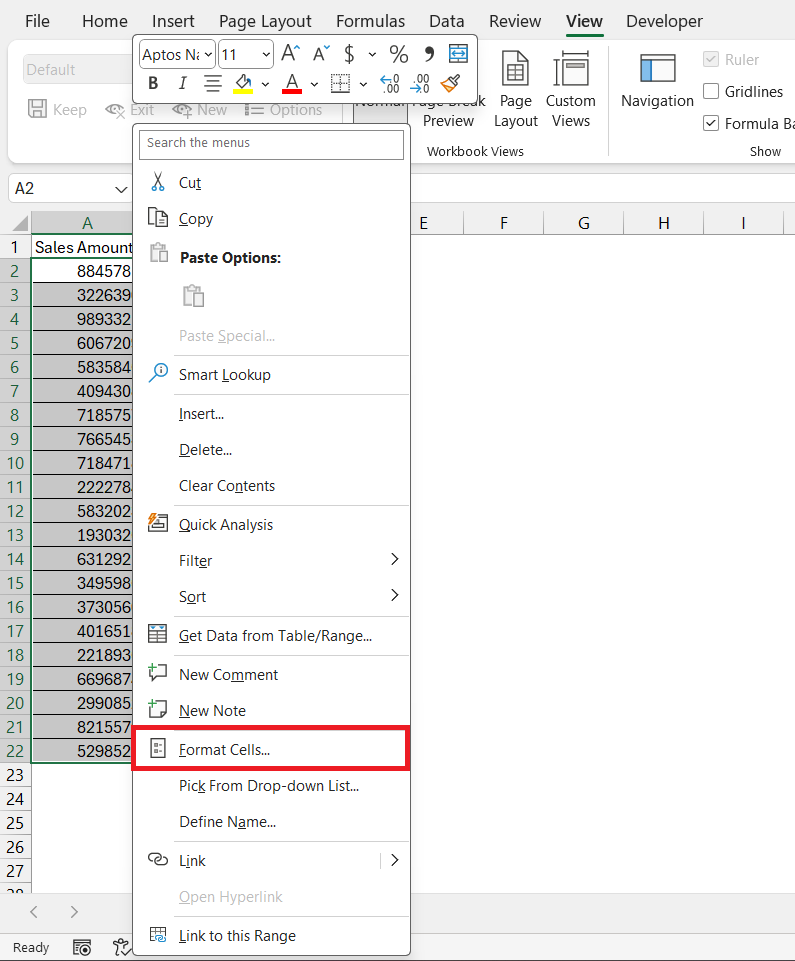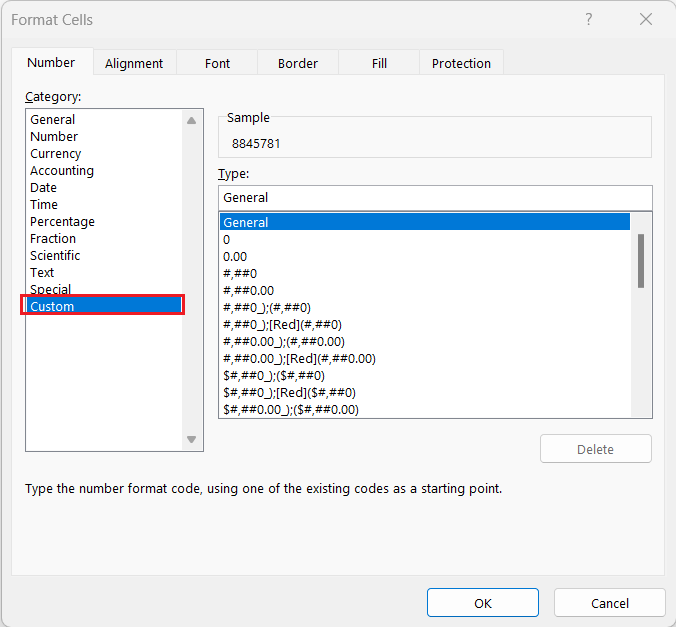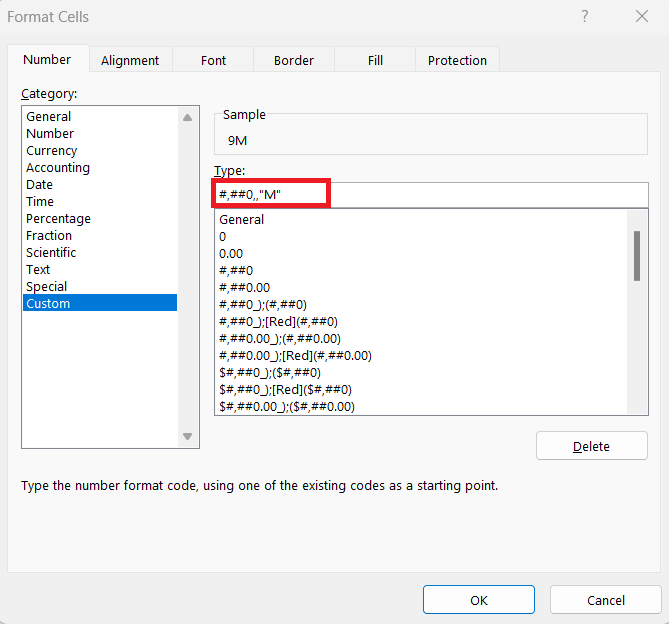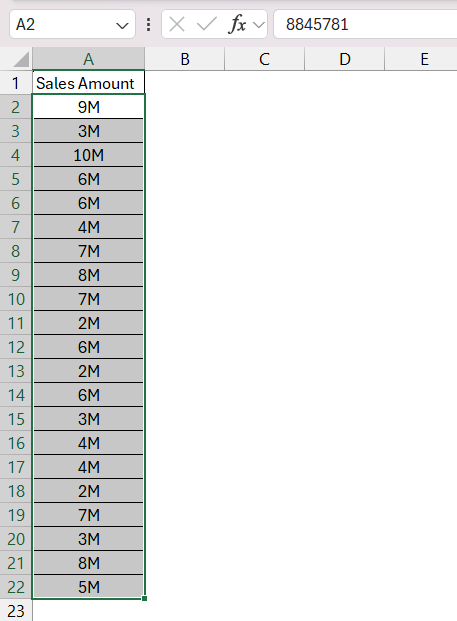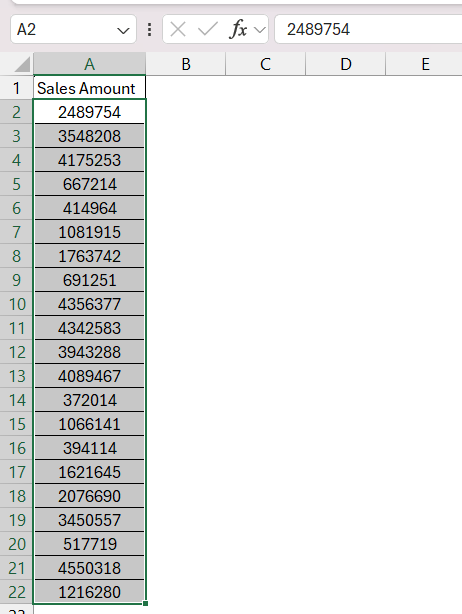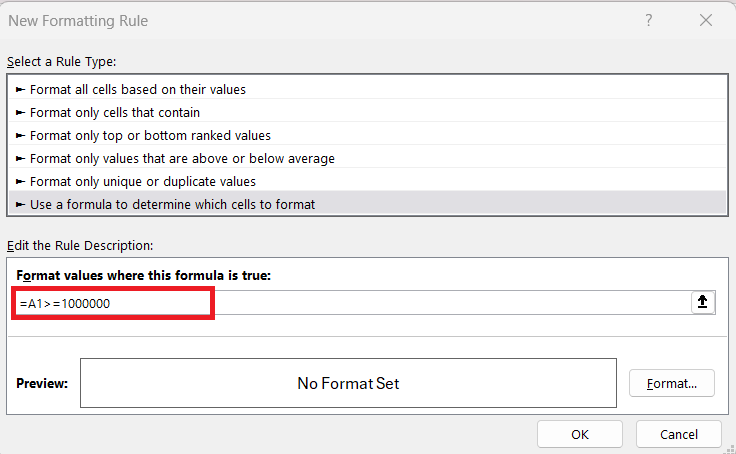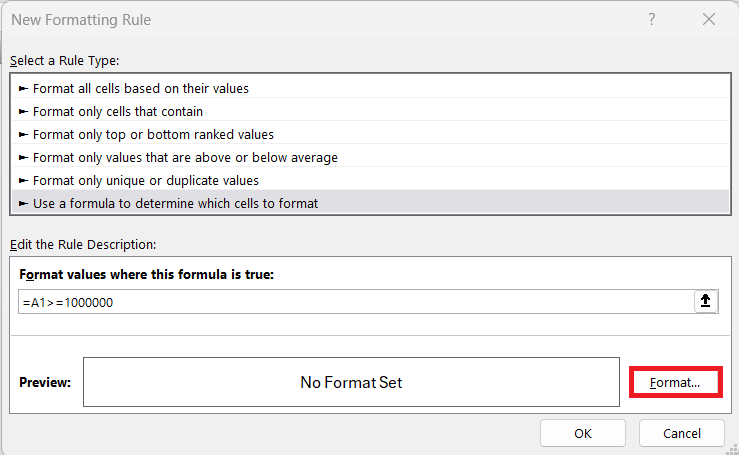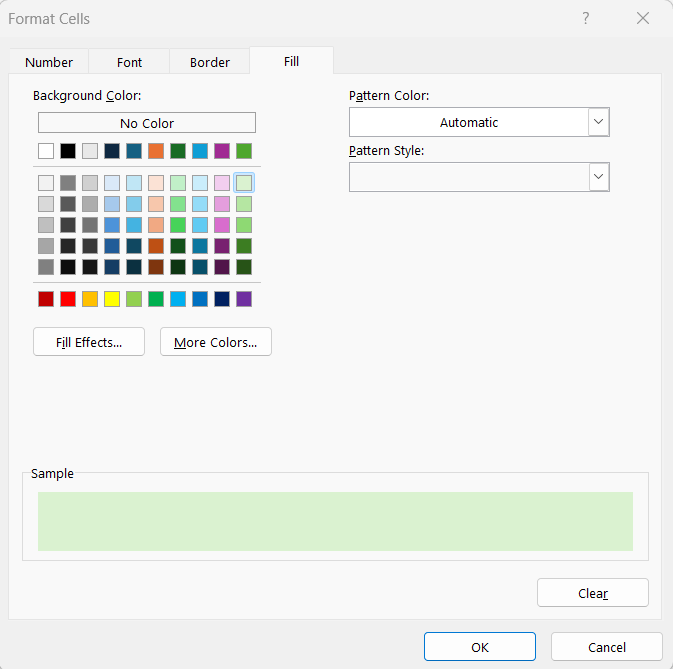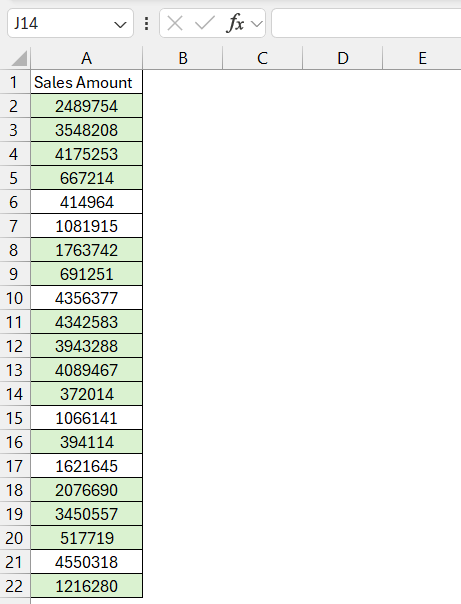Mastering Microsoft Excel‘s number formatting is crucial for transforming large, complex datasets into clear and precise information. This skill not only simplifies data presentation but also aids in effective decision-making by making it easier to digest significant figures, such as converting numbers into a million format.
Key Takeaways
- Custom number formats in Excel let you control how numbers are displayed, enhancing spreadsheet clarity and professionalism.
- Learning number format syntax allows for the simplification of data presentation, making large numbers more manageable.
- Formatting numbers as millions improve readability and comparison, especially useful for financial and large-scale data.
- Conditional formatting with custom rules dynamically highlights significant data points, aiding in trend and outlier detection.
Download the spreadsheet and follow the blog on How to Convert to Million Format in Excel – Download excel workbookMillion-format-in-Excel.xlsx
Table of Contents
Introduction to Number Formatting
The Power of Precision
Excel is a mighty tool for managing data. Mastering Excel’s number formats elevate your spreadsheets from good to great, ensuring precision and clarity even when working with vast datasets.
Turning Complexity into Simplicity
Excel isn’t just about handling complex calculations; it’s about transforming those complexities into digestible, simple information that aids decision-making. And when it comes to large numbers, that simplicity becomes crucial.
By learning to convert bulky figures into a concise format like millions or thousands, you help users grasp the essentials without the clutter. Let’s find out how you can make your data straightforward and impactful with a few formatting tweaks.
Mastering the Basics of Excel Number Formats
Understanding the Basics of Custom Number Formats in Excel
In Excel, custom number formats open a world of possibilities beyond the standard built-in options. They allow you to dictate exactly how numbers appear in your worksheet. So whether you’re dealing with currency, dates, or large figures, understanding the basic structure of custom formats is key.
It involves setting the format codes that define the appearance of numbers, such as how many decimal places are shown or when a zero is displayed.
Number Format Syntax: The Foundation for Simplification
Getting to grips with number format syntax is like learning a secret language that can simplify your data presentation. This syntax is the foundation on which you can streamline large numbers into more manageable figures.
The central elements include placeholders such as “#” for optional digits, “0” for compulsory digits, and commas and periods for scaling and decimal points. By mastering this syntax, you can customize how Excel displays numbers, leaving your sheet looking polished and professional.
Streamlining Numbers: The Path to Millions
When and Why to Display Numbers in Millions
Displaying numbers in millions isn’t just a stylistic choice; it’s a practical one, especially when dealing with financial data, large-scale metrics, or demographic statistics. When figures climb into the higher thousands, millions, or beyond, presenting them in full can be overwhelming and may even lead to misinterpretation.
By scaling the numbers down to millions, you make them much more readable and compare easier at a glance. So, whether you’re preparing a report for stakeholders or analyzing market trends, consider the clarity and conciseness that using ‘millions’ can offer.
Step-by-Step Guide for Million Format
Ready to wrangle those unwieldy figures into submission? Here’s a step-by-step approach to formatting your numbers as millions in Excel:
STEP 1: Right-click on the cell (or range of cells) that contains the number you want to format. Select ‘Format Cells’ from the context menu to open the Format Cells dialog box.
STEP 2: In the dialog box, navigate to the ‘Number’ tab and select ‘Custom’ from the list of categories.
STEP 3: In the ‘Type’ input box, enter the format code: #,##0.00,,"M" for millions. This tells Excel to divide the number by a million and display two decimal places, followed by an “M” to indicate millions.
STEP 4: Click ‘OK’ to apply the custom format. Your numbers will now appear scaled to millions with the desired precision.
Rounding Large Numbers to Nearest Million Format
Sometimes, the specifics down to the last digit aren’t necessary, and a rounded figure can present a clearer picture. In Excel, you can round large numbers to the nearest million to facilitate this high-level view. This approach condenses the data, making it easier for your audience to comprehend and compare large values.
For rounding numbers to the nearest million in Excel:
STEP 1: Click on the cell you want to format. Right-click and select ‘Format Cells’ from the context menu.
STEP 2: On the Number tab, select ‘Custom’.
STEP 3: Enter the format code #,##0,,"M" into the Type box. This code rounds your numbers to the nearest million and appends an “M” to signify the million format.
STEP 4: Hit ‘OK’ to see your numbers elegantly rounded off.
Remember, while rounding provides a cleaner look, it’s best used when precise values are less critical to your analysis.
Advanced Tips for Perfecting Your Spreadsheets
Employing Conditional Formatting with Custom Rules
To truly tailor your Excel sheets to your needs, tap into the power of conditional formatting with custom rules. This feature breathes dynamic life into your data by automatically applying particular formats based on the cells’ values, helping you spot trends, outliers, and critical points at a glance.
Implementing conditional formatting with custom rules involves:
STEP 1: Select the range of cells you want to format.
STEP 2: Navigate to the ‘Home’ tab, click on ‘Conditional Formatting’, and choose ‘New Rule’.
STEP 3: Opt for ‘Use a formula to determine which cells to format’. Craft a formula based on your conditions—let’s say, to format cells greater than a million, you’d use: =A1>=1000000.
STEP 4: Then, set the desired format by clicking ‘Format’.
STEP 5: Press ‘OK’ twice to apply the rule.
As you can see, it highlights values above a certain threshold, and conditional formatting puts a powerful tool at your disposal.
FAQs on Excel Millions Format
How Do I Convert Numbers to Show as ‘1M’ Instead of ‘1,000,000’?
To display ‘1M’ instead of ‘1,000,000’, select your cell or range, then press [Ctrl] + 1 to open the Format Cells dialog. Under Custom, type #,##0,,"M" and hit OK. This will automatically convert figures in the millions to a more readable format with the letter ‘M’.
Can I Use Custom Formatting to Change Negative Numbers’ Appearance?
Yes, you can use custom formatting to change how negative numbers appear in Excel. Create a format with a second section for negatives like 0;[Red]-0 to make negatives red. For parentheses, use 0;[Red](0). Apply this by right-clicking the cell, selecting ‘Format Cells’, and typing your code in ‘Custom’.
What is the Shortcut to Apply a Custom Number Format Quickly?
The quick shortcut to apply a custom number format in Excel is to select the desired cells and press [Ctrl] + 1. This will bring up the ‘Format Cells’ dialog box instantly, where you can navigate to the ‘Custom’ category and enter your desired number format code: #,##0,,"M"
Is It Possible to Add Currency Symbols While Formatting to Millions?
Absolutely! To add currency symbols while formatting to millions, follow the custom format structure by including the currency symbol directly in the format code. For example, for US dollars, you may use "$#,##0.00,,"M". This combines the currency format with the million indicators, neatly displaying the values as, for instance, “$1.00M”.
How do you format data labels to millions in Excel?
To format data labels to millions in Excel charts, right-click on a data label, then click ‘Format Data Labels’. In the pane, select ‘Number’, and under ‘Custom’, input the code 0.0,,"M". Press ‘Add’ and the labels will display in millions, such as “1.5M” for 1,500,000.
John Michaloudis is a former accountant and finance analyst at General Electric, a Microsoft MVP since 2020, an Amazon #1 bestselling author of 4 Microsoft Excel books and teacher of Microsoft Excel & Office over at his flagship MyExcelOnline Academy Online Course.

